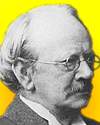
On 30 Apr 1897, at the Royal Institution Friday Evening Discourse, Joseph John (J.J.) Thomson first announced the existence of the electron (as they are now known). During this lecture, he called it by a different name, meaning “small body.”
Thomson described his discovery and calculations that the particle of matter was a thousand times smaller than the atom.
Although as director of the Cavendish Laboratory at the University of Cambridge, Thomson was one of the most respected British physicists, the scientists present found the news hard to believe. It had long been held that the atom was the smallest and indivisible part of matter that could exist.
Nevertheless, the electron was the first elementary particle to be discovered.
You can read Thomson's own words, as delivered at that meeting, in his paper, Cathode Rays, from the Proceedings of the Royal Institution, 1897.
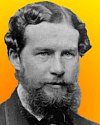
On 30 Apr 1834, John Lubbock (Lord Avery) was born, an English banker, politician, naturalist and archaeologist who coined the terms Neolithic and Paleolithic. His career was astonishingly productive in a broad range of interests. He was a man always in search of knowledge and sharing knowledge. He wrote many books, including widely read work in natural history. Today's book pick is: , by . In this pioneering work, mostly related to ants, he gives considerable detail including formation and maintenance of nests, relation of ants to plants and animals, behavior, recognition of friends, power of communications and senses. He also used obstacles and mazes to test the intelligence of ants, thus anticipating animal psychologists like Kohler. While Lubbock was young, his father was persuaded by Charles Darwin to give him a microscope. Thus Lubbock acquired his love and respect of nature and science - with a legacy from Darwin! With his own writing skills, was to make plain to the layman the aims and conclusions of specialists.
It is available from Amazon, typically about (As of earlier time of writing - subject to change.)
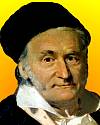 | Mathematics is the queen of the sciences and arithmetic [number theory] is the queen of mathematics. She often condescends to render service to astronomy and other natural sciences, but in all relations, she is entitled to first rank. |
 | If we are ever in doubt what to do, it is a good rule to ask ourselves what we shall wish on the morrow that we had done. |
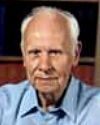 | Part of the charm in solving a differential equation is in the feeling that we are getting something for nothing. So little information appears to go into the solution that there is a sense of surprise over the extensive results that are derived. |
| Before you look at today's web page, see if you can answer some of these questions about the events that happened on this day. Some of the names are very familiar. Others will likely stump you. Tickle your curiosity with these questions, then check your answers on today's web page. | |
| Births | |
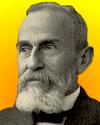 | Eugen Bleuler, born 30 Apr 1857, was a Swiss psychiatrist, who introduced the now current term (1908) to describe the disorder previously known as dementia praecox. For his studies of this disorder, he was one of the most influential psychiatrists of his time. What name did Bleuler give to dementia praecox, by which is now known? |
| Deaths | |
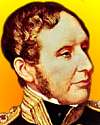 | Robert Fitzroy (1805-1865) was the British naval officer who commanded the round the world voyage on which Charles Darwin sailed as the ship's naturalist. That voyage provided Darwin with much of the material on which he based his theory of evolution. When Fitzroy retired he devoted himself to meteorology. He devised a storm warning system that was the prototype of the daily weather forecast, invented a barometer, and published The Weather Book (1863). What was the name of the vessel carrying Darwin that Fitzroy commanded? |
| Events | |
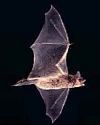 | On 30 Apr 1960, the oldest banded U.S. bat was identified, from the date read on the band. It was a female little brown bat (the most abundant bat species in the U.S.) What do you think was the age of this oldest U.S. bat? |
 | On 30 Apr 1955, the element 101, was announced. It was named in honour of a scientist that contributed to the periodic table of the elements. What is the name of element 101? |
 | On 30 Apr 1897, at the Royal Institution Friday Evening Discourse, Joseph John Thomson (1856-1940) first announced the existence of electrons - as they are now named. Earlier in the year, he had made the surprising discovery of this particle of matter a thousand times smaller than the atom. He referred to it by a name he based on the Latin words for “small body.” (Later, the electron became known by its present name, based on the Greek word for “amber”.) What was Thomson’s original name for the electron? |
Fast answers for the previous newsletter for April 29: to simulate the effect of lightning in the primordial atmosphere of Earth, and investigate the more complex organic molecules formed that may have been a route to life on Earth • whale oil • cobalt • the decade including the year 1879 • rubber.
 If you enjoy this newsletter, the website, or wish to offer encouragement or ideas, please send feedback by using your mail reader Reply button.
If you enjoy this newsletter, the website, or wish to offer encouragement or ideas, please send feedback by using your mail reader Reply button. Your click on a Facebook, StumbleUpon, or other social button on the site webpages is also a welcome sign of appreciation. Thank you for using them.
© This newsletter is copyright 2020 by todayinsci.com. Please respect the Webmaster's wishes and do not put copies online of the Newsletter — or any Today in Science History webpage. (If you already have done so, please remove them. Thank you.) Offline use in education is encouraged such as a printout on a bulletin board, or projected for classroom viewing. Online, descriptive links to our pages are welcomed, as these will provide a reader with the most recent revisions, additions and/or corrections of a webpage. For any other copyright questions, please contact the Webmaster by using your mail reader Reply button.
--
If you do not want to receive any more newsletters, Unsubscribe
To update your preferences and to unsubscribe visit this link
Executive Real Estate Business Class
-
"It was like a man with wings. It wasn't like anything you'd see on TV or in a monster movie." ...
About the publisher
Search This Blog
Blog Archive
-
▼
2021
(585)
-
▼
April
(57)
- On This Day for April 30 - George Washington inaug...
- Newsletter for Friday 30 April.
- On This Day for April 29 - British royal wedding, ...
- Newsletter for Thursday 29 April.
- On This Day for April 28 - Benito Mussolini execut...
- Newsletter for Wednesday 28 April.
- On This Day for April 27 - Independence for Sierra...
- Newsletter for Tuesday 27 April.
- On This Day for April 26 - Chernobyl nuclear accid...
- Newsletter for Monday 26 April.
- On This Day for April 25 - Hubble Space Telescope ...
- See How They Tracked Down Bin Laden
- Newsletter for Sunday 25 April.
- On This Day for April 24 - Installation of Pope Be...
- Newsletter for Saturday 24 April.
- On This Day for April 23 - Voting for Eritrea's in...
- Earth Day Bonus: Become a Climate Action Expert
- On This Day for April 22 - First Earth Day, Miguel...
- On This Day for April 21 - French elections held, ...
- Newsletter for Wednesday 21 April.
- On This Day for April 20 - Explosion on the Deepwa...
- Newsletter for Tuesday 20 April.
- On This Day for April 19 - American Revolution beg...
- Newsletter for Monday 19 April.
- On This Day for April 18 - The midnight ride of Pa...
- Newsletter for Sunday 18 April.
- On This Day for April 17 - Canada Act proclaimed, ...
- Newsletter for Saturday 17 April.
- On This Day for April 16 - Harriet Quimby's flight...
- Newsletter for Friday 16 April.
- On This Day for April 15 - Sinking of the Titanic,...
- Newsletter for Thursday 15 April.
- On This Day for April 14 - Abraham Lincoln shot, J...
- On This Day for April 13 - Alfred Dreyfus imprison...
- Newsletter for Tuesday 13 April.
- On This Day for April 12 - Launch of first space s...
- Newsletter for Monday 12 April.
- John of Gaunt: father of England’s medieval monarchy
- On This Day for April 11 - Napoleon's abdication a...
- Newsletter for Sunday 11 April.
- On This Day for April 10 - Anschluss approved in A...
- On This Day for April 9 - Fall of Baghdad, Jørn Ut...
- Newsletter for Friday 9 April.
- On This Day for April 8 - Celebration of the Buddh...
- On This Day for April 7 - Jack Nicklaus's first Ma...
- Newsletter for Wednesday 7 April.
- On This Day for April 6 - Olympics revived, Raphae...
- On This Day for April 5 - Battle of Maipú, Colin P...
- The history and origins of Easter
- On This Day for April 4 - Martin Luther King, Jr.,...
- Newsletter for Sunday 4 April.
- On This Day for April 3 - Implementation of the Ma...
- Newsletter for Saturday 3 April.
- On This Day for April 2 - Death of Pope John Paul ...
- Newsletter for Friday 2 April.
- On This Day for April 1 - Creation of Nunavut, Ser...
- Newsletter for Thursday 1 April.
-
▼
April
(57)
-
Blogroll
-
About
HistoryFact










0 comments:
Post a Comment